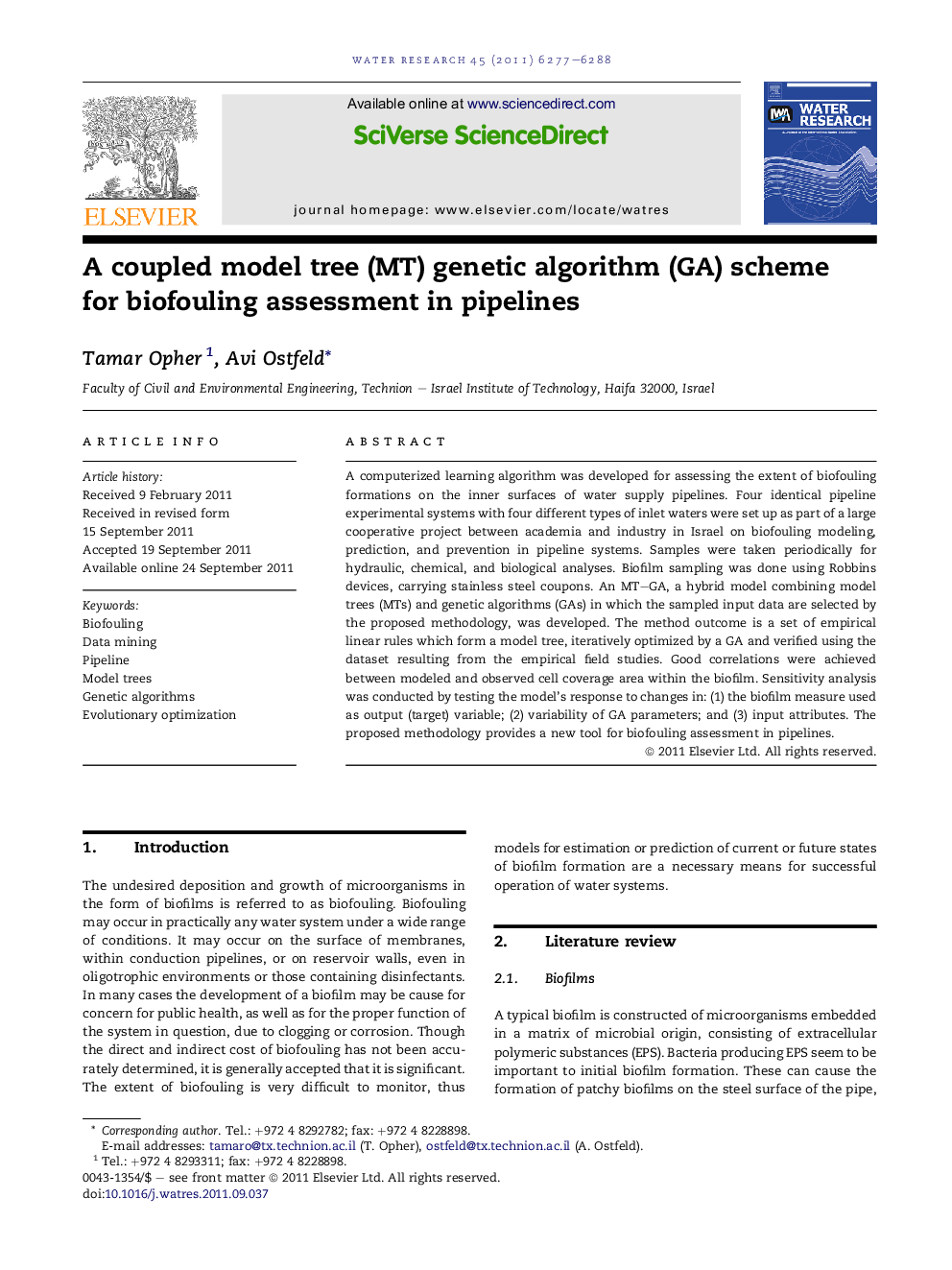| Article ID | Journal | Published Year | Pages | File Type |
|---|---|---|---|---|
| 4482711 | Water Research | 2011 | 12 Pages |
A computerized learning algorithm was developed for assessing the extent of biofouling formations on the inner surfaces of water supply pipelines. Four identical pipeline experimental systems with four different types of inlet waters were set up as part of a large cooperative project between academia and industry in Israel on biofouling modeling, prediction, and prevention in pipeline systems. Samples were taken periodically for hydraulic, chemical, and biological analyses. Biofilm sampling was done using Robbins devices, carrying stainless steel coupons. An MT–GA, a hybrid model combining model trees (MTs) and genetic algorithms (GAs) in which the sampled input data are selected by the proposed methodology, was developed. The method outcome is a set of empirical linear rules which form a model tree, iteratively optimized by a GA and verified using the dataset resulting from the empirical field studies. Good correlations were achieved between modeled and observed cell coverage area within the biofilm. Sensitivity analysis was conducted by testing the model’s response to changes in: (1) the biofilm measure used as output (target) variable; (2) variability of GA parameters; and (3) input attributes. The proposed methodology provides a new tool for biofouling assessment in pipelines.
Graphical abstractFigure optionsDownload full-size imageDownload high-quality image (111 K)Download as PowerPoint slideHighlights► Biofilm modeling in pipelines. ► A new modeling methodology coupling data-driven and evolutionary algorithms. ► Simple outcome of linear rules for biofilm estimation. ► Successful accuracy in modeling percentage of cell coverage area. ► Acidithiobacillus microbial community seems to play a major role in biofilm proliferation.
